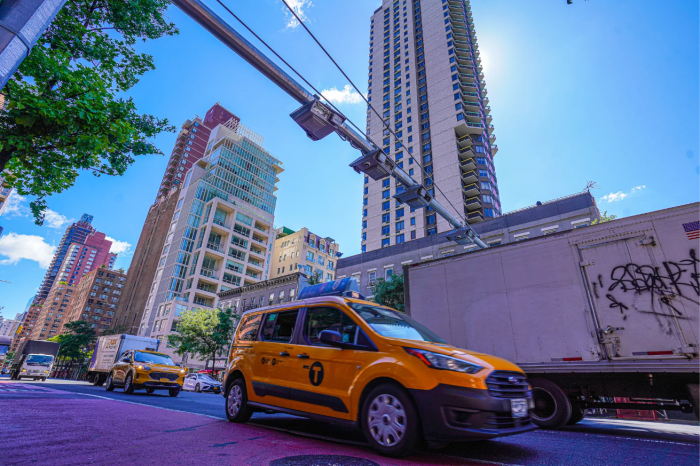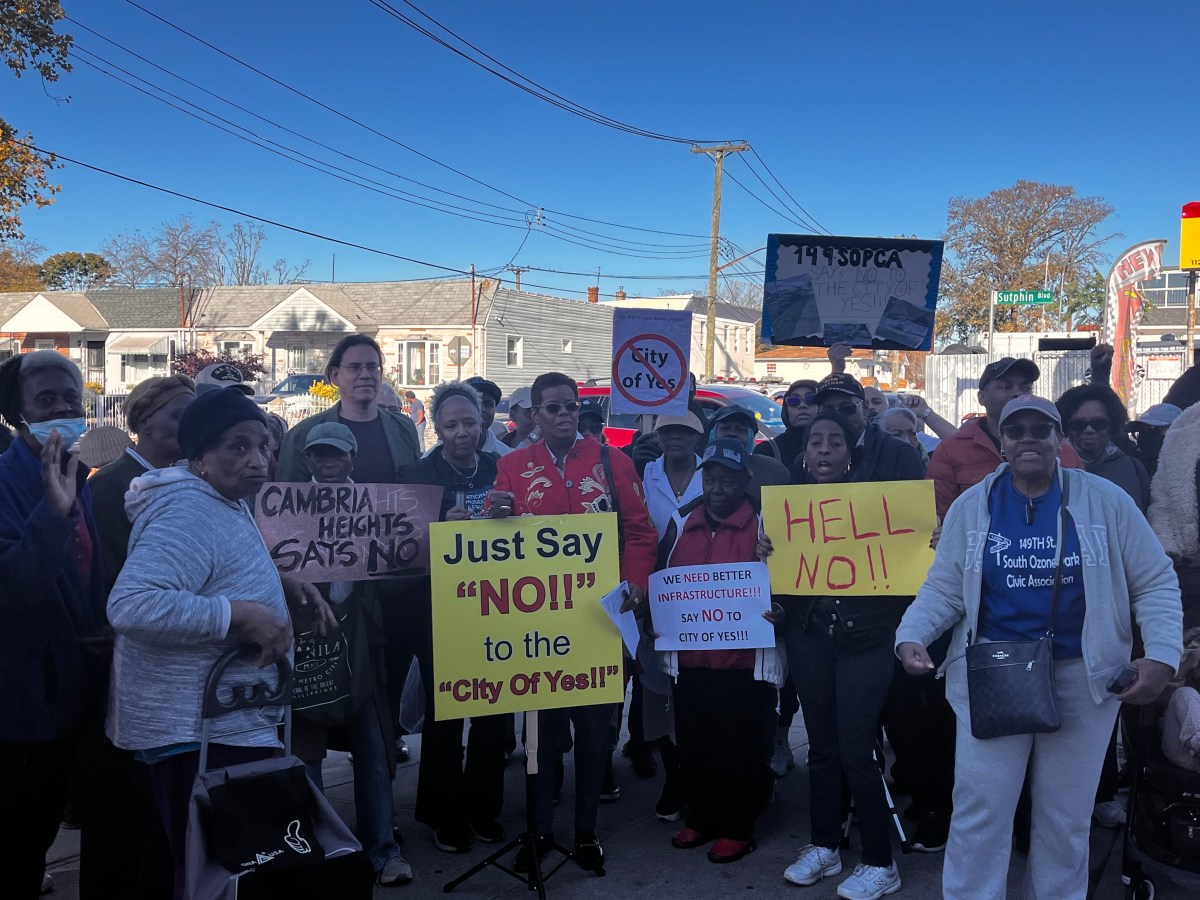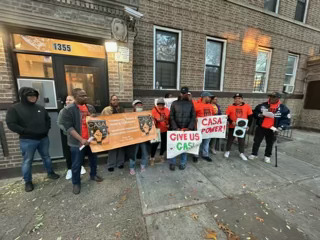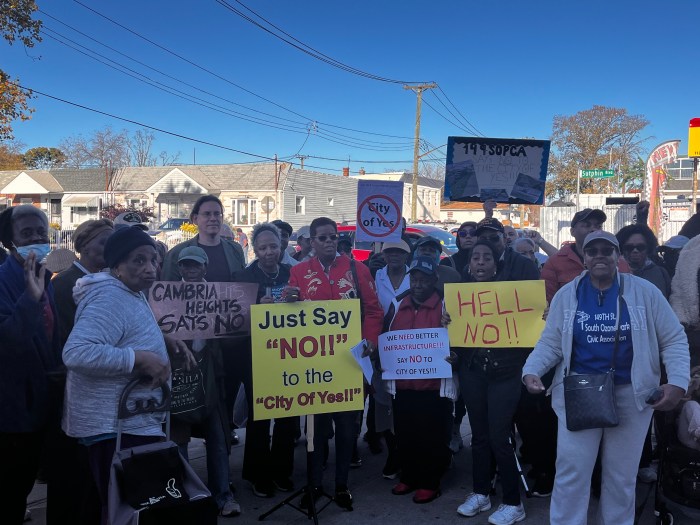
A vocal group of transit advocates crashed an anti-congestion pricing news conference in midtown Sunday, in an attempt to drown out concerns from Queens politicians and community leaders who oppose the idea.
The politicians — State Assemblyman David Weprin, State Sen. Leroy Comrie and Councilman Barry Grodenchik — argue that the congestion pricing proposal that Gov. Andrew Cuomo’s Fix NYC panel put forth on Friday would have negligible impacts on traffic while unfairly burdening outer borough residents of Brooklyn and Queens. The proposal recommends charging private vehicles a fee $11.52 to enter Manhattan below 60th Street between the hours of 6 a.m. and 8 p.m. on weekdays as a way to raise at least $1 billion annually for funding the Metropolitan Transportation Authority.
Meanwhile, the protest group, organized by the nonprofit Riders Alliance, chanted slogans like “fix the subways!” from the other end of the plaza. Riders Alliance countered that the politicians were grossly exaggerating the impacts the congestion pricing proposal would have on outer-borough New Yorkers.
“We support fixing the subways; we can discuss at another time many ways to have a funding stream for the MTA,” Weprin said at the news conference organized at midtown’s Tramway Plaza, near where the fees would take effect. “There are ways to fix it, and a way to do it not on the backs of middle-class New Yorkers — mostly from Queens and Brooklyn and even the suburbs and small businesses — which would be devastated by the proposal.”
Rebecca Bailin, the campaign manager at the Riders Alliance, cited the Fix NYC proposal’s findings that just 4 percent of outer-borough residents commute to jobs in Manhattan by vehicle, or a total of about 118,000 residents. She also referenced census data that found household incomes of car owners tend to be higher than those who don’t own vehicles.
“We are sick and tired of grandstanding elected officials who are defending wealthy New Yorkers instead of working New Yorkers,” Bailin said. “The numbers speak the truth; it’s 4 percent of New Yorkers. Meanwhile, we have millions of New Yorkers who will be abandoned if we do not put in this necessary transit funding. So the math is simple, are we privileging four percent of wealthy New Yorkers, or are we helping millions of transit riders.”
While both rallies were small, the Riders Alliance’s group of about 20 people outnumbered the dozen or so representatives from Queens who came to oppose congestion pricing. Members of the dueling groups argued at times over the merits of congestion pricing before and after the conference. At one point, Comrie tried unsuccessfully to keep a Riders Alliance member from getting too close to the Queens representative’s news conference. More advocates then joined and heckled what they felt were the most outrageous claims.
Outer-borough opposition has helped kill two recent congestion pricing proposals, dating back to the one pitched by former Mayor Michael Bloomberg in 2008. Cuomo, who received the proposal on Friday, appeared to be willing to negotiate elements of the plan in the coming months.
Calling himself a “Queens boy,” the governor said he’d like to see the plan also include the reduction of the MTA’s outer-borough tolls to improve transit equity. Toll reductions were a key element of the most recent congestion pricing plan, conjured up by the Move New York coalition in 2015.
“I’m a Queens boy, hence the accent — proud of it,” Cuomo said at an unrelated news conference Sunday. “And I now live in Westchester, drive in from Westchester. I’d like to see the outer- borough bridges come down in tolls because I think they’re absurd. So part of the rationalization is I’d like to see the outer-borough bridges come down in tolls.”

































